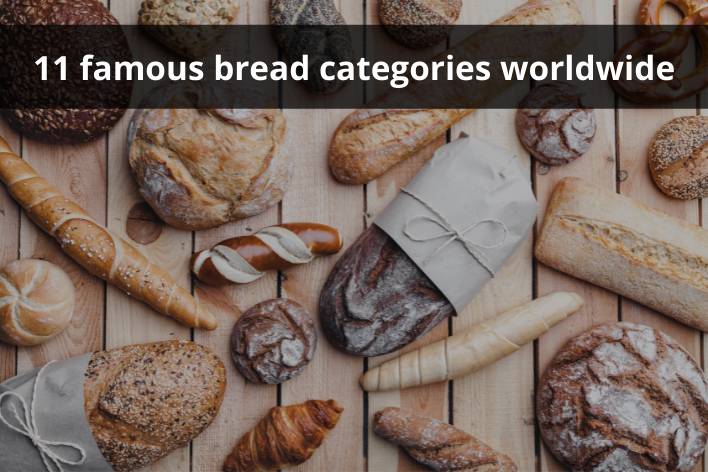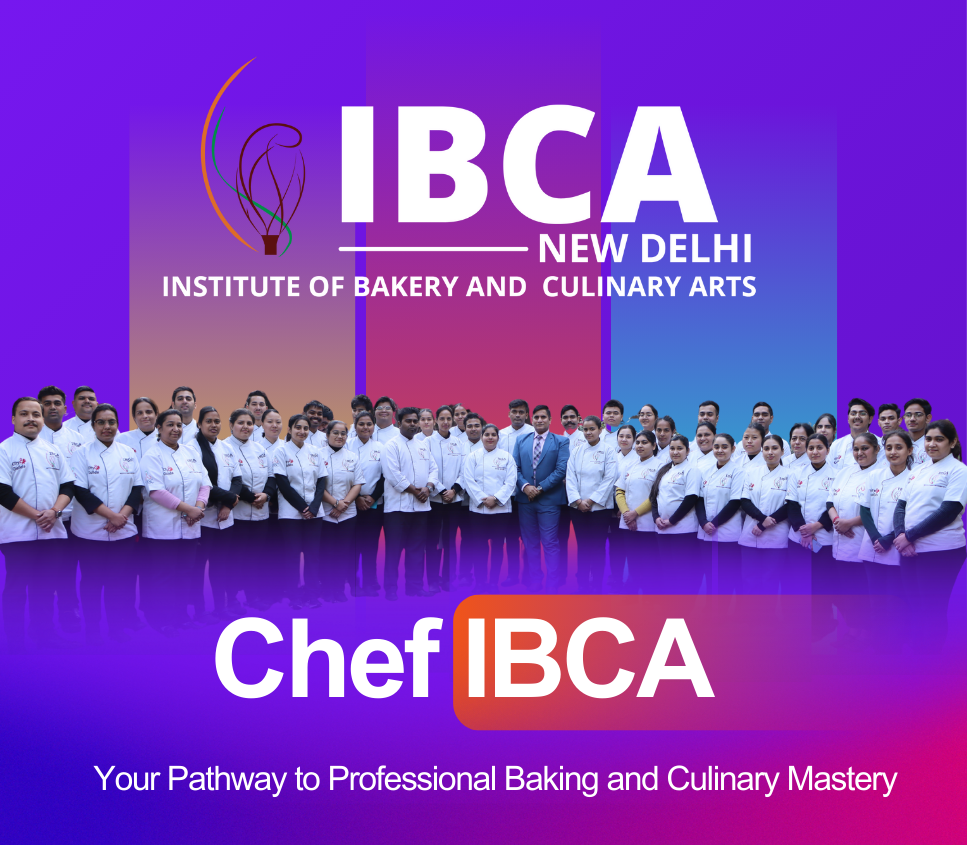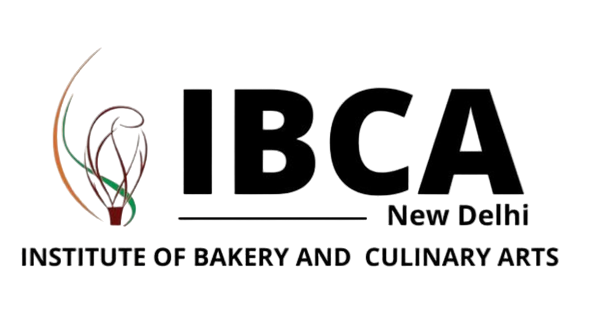Surprisingly, it is the worldwide baking market that is benefiting from society’s increased emphasis on healthy living. The millennial generation is a key demographic, and their growing disposable wealth is fueling a resurgent and diverse sector. To be a leader in establishing IBCA as India’s premier learning centre for Bakery and Culinary Arts. Providing the best teaching standards for future students and taking the initiative to incorporate more creativity into their learning curve.
Low-carb diets may attempt to eliminate bread, yet it remains “the staff of life” for the vast majority of us. Yes, it’s carbohydrate-laden, but there’s a reason why bread has been a mainstay of the human diet since the Neolithic period, some 10,000 years ago. It’s delectable. It’s also budget-friendly and filling. Because different types of bread have been loved by so many people for so long, it’s not surprising that a slew of superstitions have sprung up around them, such as the legend that whoever eats the last slice must kiss the cook, or the old wives’ tale that eating the crusts will cause your hair to curl.
The development of the baking and food industries has always necessitated the acquisition of new skills and the creation of new work possibilities. We’ve tailored our programmes to fit the city and guilds curricula, and we recommend that you partner with us to meet your personnel requirements.
When we think of bread, we think of how substantial it is in terms of nutrition. Bread is not only an accompaniment but also a vital binding factor in most countries, including India. But this wheat and water mixture represents so much more than just being the most vital ingredient of a meal.
The science behind the taste and texture of bread, like any other meal, has evolved over time through a lot of trial and error. After all those years of hard effort and research, the entire world now has bread that is native to their respective countries, states, or cities.
India is currently developing in tandem with the progress and upgrading of educational facilities. India’s educational and management services are well-received around the world. India’s citizens are reaping the greatest benefits from this opportunity. Obtaining and acquiring as much knowledge as possible in order to make successful careers for themselves.
Cooking and baking passions are encouraged and cultivated in a variety of settings. Bakery Institute in India is one of the top, offering a variety of professional bakery courses.
1. Baguette de France, France
The French baguette is a long, thin loaf of bread with a crusty flavor. Wheat, yeast, water, and salt are used to make the bread. The name “baguette” is derived from the Italian word “bacchetta,” and steam ovens were first used to bake French bread in 1920. With a baguette, the bread is ideal for appetizers and meals. The crusty section of the finest is excellent for strews and soup. Baguette is also used to make delicious sandwiches and is often available on Parisian streets with baguette and jam.
Bread’s Origins: The bread is well-known for its origins in France. The traditional gastronomy of France is well-known.
2. Middle Eastern Pita Bread
Pita bread is a light and airy flatbread made with flour, water, yeast, and salt. The bread is baked in a hot oven until it puffs up, flattens, and cools. The bread also aids in the reduction of cholesterol and the regulation of blood pressure. As a result, it is widely utilized on a daily basis in all Arabic countries as compared to other breads. Meats, falafel, shawarma, and salads can all be served with the bread.
Bread’s Origins: Pita bread is a Middle Eastern bread with a long history. The bread is thought to be particularly nutritious. Many Middle Eastern immigrants arrived in America in the early 1990s, bringing with them Pita bread and spicy dishes. It is now quite popular and widely consumed all over the world.
3. Mexico’s Tortilla
Corn tortillas, often known as Tortillas, are manufactured from maize flour. It’s a flat, thin bread. Tortilla is such a flexible bread that it is a must-have in any Mexican cuisine. It’s used in a variety of tacos. White, yellow, blue, or red corns are used to make them. Tortilla flour is widely utilised and is rapidly rising in the flour business. In the United States alone, there are around 450 tortilla manufacturers.
Bread’s Origins: The bread’s origins are in North America. In Mexico, Tortilla reigns supreme in almost all cuisines. In a single day, a typical Mexican family of four can consume up to 2 pounds of Tortilla. In 2015, tortillas were famous all around the world. Bread is consumed all across the world and is continuously increasing in popularity. The 24th of February is National Tortilla Day around the world.
4. Ethopian injera
Teff flour is used to make injera bread, which is named after the Amharic term “yatafa,” which means “lost” in English. It’s a flat bread with a soft texture that’s great for strews and sauces. Teff is a sour-tasting grain that is both ancient and healthful. For a spongy and acidic taste, the flour is combined with water and fermented for many days. The dish is served on top of Injera, which also serves as a tablecloth. It’s used to hold food in place.
The Bread’s Origin: Injera is the bread’s origin. Ethiopia, Eritrea, and Somalia were among the first users of the bread. Ethiopian cuisine consists primarily on a wide variety of vegetables and spicy meats served with Injera bread.
5. Poland’s Bagel
The bread is created by hand since it must have a round shape with a round hope in the centre. Wheat dough is used to make the bagel bread. The flour is baked after it has been combined with water. Bagels are popular all around the world, and they’re delicious with cream and cheese or just plain coffee or tea. Bagels are the only type of bread that is boiled before baking. The rationale for the circular hole in the middle is that it increases the surface area of the bagel, allowing for more crust production and faster cooking.
Origin of the Bread: The bagel is a type of bread that originated in Poland and is now commonly consumed in Eastern and North American countries. Poland’s cuisine is primarily composed on agricultural products.
6. India’s Paratha
The paratha is a flat wheat flour bread. Wheat flour is combined with oil and water and cooked in a nonstick skillet with oil or ghee before serving with curry. There are several delicious parathas to choose from, but the most basic is a plain butter paratha with curry. Inside, parathas can be loaded with a variety of veggies, cheese, and paneer, then fried and served with ketchup or spicy chutneys for a unique flavor.
The Bread’s Origins: Paratha is an Indian bread. Parathas have been around for hundreds of years and are a staple in every Indian household.
7. Rugbrod, Denmark
Rye flour, seeds such as sunflower seeds, linseeds, or pumpkin seeds are utilised as ingredients. It has a brown colour and a long rectangle shape. It’s a great gluten-free alternative to wheat bread. This original homemade Danish rye bread, or rugbrod, is full of rich nutrients, has a beautiful texture, and tastes just incredible.
Origin of the Bread: Rugbrod is a Danish bread with a long history. It is the most popular traditional bread in the area. Traditional Danish cuisine consists of fish dishes, meats, potatoes, and gravy.
8. Crumpet, UK
Crumpets are little cakes with a spongy texture prepared from flour, yeast, and water or milk. Crumpets, also known as priklets, resemble a pan cake in appearance. It tastes like a muffin, but it’s a lot lighter. It has a spherical smooth bottom with little holes on top. You can enjoy them for breakfast with tea or coffee and some tasty toppings. It’s similar to English muffins in appearance. Butter, peanut butter, jam, marmalade, lemon yogurt, melted cheese, honey, chocolate sauce, or even ice cream can be spread on crumpets. There are so many possibilities that you want to try them all.
Origin of the Bread: Crumpets are a type of bread that developed in the United Kingdom around 1932. The mainstays of British cuisine are substantial breakfasts, fish and chips. European cuisine is influenced by European, Indian, and other cultures.
9. Focaccia (United States)
Focaccia is an Italian flatbread prepared in the oven. Sandwiches, lunches, and snacks can all be made with focaccia. It can be made ahead of time and frozen, so it can be eaten whenever you choose. Focaccia is created using the same dough as pizza, but it has a thicker crust. It is delicious when served hot with olive oil, onion, roasted tomatoes, and salt sprinkled on top.
Origin of the Bread: The bread’s origins can be traced back to Italy. Today, bread is becoming increasingly popular all over the world. Focaccia is now commonly consumed in the United States. Ingredients, recipes, and techniques are the mainstays of Mediterranean cuisine.
10. Quick Bread (United States)
Instead of yeast and eggs, quick bread is created with baking soda and baking powder. Quick bread has the virtue of being simple and quick to prepare. Quick bread can be used to make banana bread, beer bread, biscuits, muffins, and pancakes. Quick bread is a popular choice among both novice and professional bakers. Compared to yeast bread, quick bread are lighter in color and softer. For a quick bite, you should absolutely give them a try.
Origin of the Bread: Quick bread was invented by Americans in the eighteenth century. In the United States, it is the oldest type of bread. Americans are notorious for including bread in nearly every meal.
11. Naan
Naan, also known as Naan Bread in other parts of the world, is a soft and light bread that goes well with a variety of curries and lentils. India is a country where roti is the staple bread and there are many alternatives. Along with parathas, naan is one of the most popular replacements. The end result must have a texture that is somewhat crisp on the exterior and soft and soaks on the inside, and the naan dough must be fluffy.
Origin of the Bread: Native of India
Institute of Bakery & Culinary Arts
Institute of Bakery & Culinary Arts (IBCA) is one of the most prestigious Bakery Institute in India located in India’s capital, serving as an ideal training ground for future professionals in the fields of Bakery and Culinary Arts. Chef Balendra Singh, the founder, has more than 20 years of expertise in the field and has established the IBCA from the ground up into a learning hub for the country’s greatest chefs and bakers who flourish in the face of contemporary challenges in order to become the future generation’s chefs and bakers.




